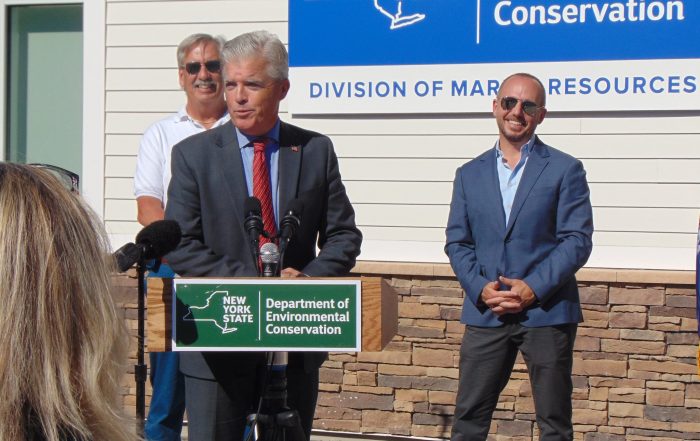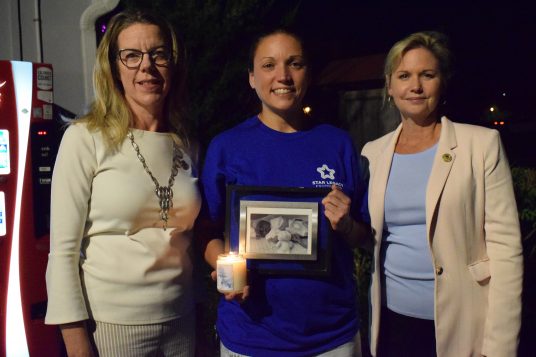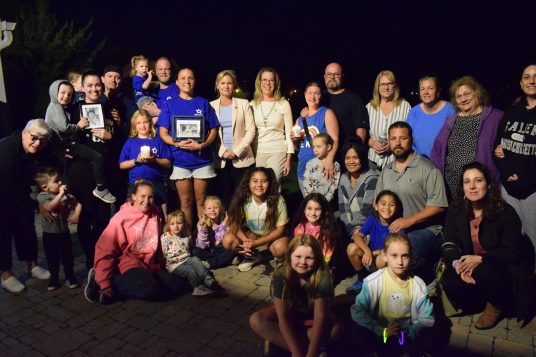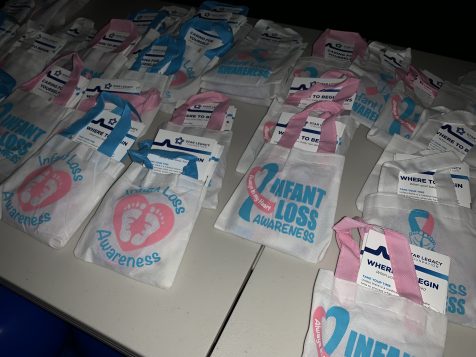By Heidi Sutton
 Halloween is such a fun time of year and celebrations have come early this year, with many events happening this weekend in addition to next weekend. Here are 31 Halloween events on the North Shore to enjoy with your family.
Halloween is such a fun time of year and celebrations have come early this year, with many events happening this weekend in addition to next weekend. Here are 31 Halloween events on the North Shore to enjoy with your family.
Centerport
Vanderbilt Fall Festival
The Suffolk County Vanderbilt Museum, 180 Little Neck Road, Centerport hosts a Fall Festival with lots of seasonal fun for visitors of every age to enjoy a safe Halloween on Friday evenings and on weekends through Halloween. Choose daytime events from noon to 4 p.m. with mini golf, face painting, pumpkin patch, Halloween games, a scavenger hunt or nightime attractions with a Wicked Walk, a haunted maze, and The Wicked Haunt, the museum’s version of a haunted house, plus a 9-hole Mini Golf from 6 to 10 p.m. For more information or to purchase tickets, visit www.vanderbiltmuseum.org.
Center Moriches – just added!
Magic of the Cauldron – adults only
The Ketcham Inn, 81 Main St., Center Moriches presents Magic of the Cauldron on Oct. 30 from 6 to 8 p.m. As the veil of darkness appears … pull up a chair around the cauldron on Ketcham Inn’s front lawn and feel the warmth of the fire. Hear the cauldron story while sipping savory soup and enjoy warm freshly baked bread from the Inn’s c. 1693 hearth by historic cook Diane Schwindt. Tickets are $15 per person (adults only please). The tavern will be open to purchase an additional drink. All proceeds go toward the restoration of the Inn. Call 631-878-1855 or visit www.ketchaminnfoundation.org.
Cold Spring Harbor
Harbor Haunts Walking Tour
The Whaling Museum, 301 Main St. Cold Spring Harbor hosts a Harbor Haunts Walking Tour on Oct 23 at 4:30 and 6 p.m. Explore Cold Spring Harbor’s ghostly side with fascinating tales of mishaps and historic hauntings on Main Street. Recommended for adults and children ages 8 and up. All tours are held rain or shine. Fee is $12 adults, $8 children. Register for the tours at www.cshwhalingmuseum.org or call 631-367-3418.
Haunted Hatchery
Calling all ghosts and goblins, spiders and bones … Cold Spring Harbor Fish Hatchery, 1660 Route 25A, Cold Spring Harbor will host a Halloween event on Oct. 30 from 2 to 5 p.m. Families are welcome to join us for a not-so-scary Haunted Hatchery. Trick-or-Treat your way through their outdoor grounds. Admission fee is $7 adults, $6 seniors, $5 children ages 3 to 12. 516-692-6768, www.cshfishhatchery.org
Commack
Trunk-N-Treat
Commack United Methodist Church, 486 Townline Road, Commack presents a Trunk-N-Treat event on Oct. 30 from 3 to 5 p.m. Children can trick or treat for candy at festively decorated car trunks and truck beds. Stay for some games and activities. Free. 631-499-7310, www.commack-umc.org
 Farmingville
Farmingville
Trick or Treat Trail
Join the Farmingville Historical Society on Oct. 30 and 31 for a Trick or Treat Trail at Farmingville Hills County Park, 503 Horseblock Road, Farmingville from noon to 3 p.m. Come in costume and trick or treat along a trail while learning about the history of candy. Fill your bag with real, full-size candy treats. The entry fee is $12 per trick or treater. Parents are welcome to escort their children without paying. Please note this is not a haunted trail. All Trick or Treaters must pre-register at www.farmingvillehistoricalsociety.org.
Dark Night: Halloween Trail
Long Island Community Hospital Amphitheater, 1 Ski Run Lane, Farmingville presents Dark Night: Halloween Trail, an outdoor extravaganza combining moderate scares with comedy that at the same time celebrates the nostalgia of vintage haunted trails through a post-modern twist on inspired characters from pop culture and horror movies of the 1990s, on Oct. 22 to 24 and Oct. 28 to 31. Hours are 7 to 11 p.m. on Fridays and Saturdays and 7 to 10:30 p.m. on Sundays and on Thursday, Oct. 28. Tickets are $35 adults, $15 per child. To purchase tickets, please visit, www.DarkNightLI.com.
Huntington
All Hallows Tour
Huntington Town Hall, 100 Main St., Huntington hosts an All Hallows tour at the Town Clerk’s archives every Monday, Wednesday and Friday through October from 1:30 to 4 p.m. The Halloween event will feature live interpretations of stories taken out of the archives vault. Free. Call 631-351-3216 or 631-351-3035.
Trick or Treat at the Heckscher
Families are invited to celebrate Halloween at the Heckscher Museum of Art, 2 Prime Ave., Huntington on Oct. 28 from noon to 5 p.m. Create a spooktacular art activity, make a haunted Digital Action painting, and take home a festive treat! Free admission for kids in costume and their families! Reserve timed tickets at www.heckscher.org. 631-380-3230.
Kings Park
Seaside Lantern Walk
Join the staff at Sunken Meadow State Park, Route 25A and Sunken Meadow Parkway, Kings Park for a Seaside Lantern Walk on Oct. 24 from 6:30 to 8 p.m. See the beach in a whole new light as you round the point of Sunken Meadow State Park with only lanterns to guide the way. The group will pause along the way for some Long Island historical scary stories! Reservations are required. To register, please visit Eventbrite.com and search for #NatureEdventures. For more info, call 631-581-1072
Lake Ronkonkoma
Halloween Pet Parade
The Lake Ronkonkoma Civic Organization hosts a Halloween Pet Parade in the Lake Shore Plaza parking lot on Portion Road in front of Shoprite on Oct. 23 from 11 to 11:45 a.m. Goodie bags for all participants, top prizes for scariest, original and cute, 50/50 raffle. www.lakeronkonkomacivic.org
 Miller Place
Miller Place
Spooky Lantern Tour
The Miller Place Mount Sinai Historical Society presents its annual Spooky Lantern Tour, a not-too-scary walking tour of the haunted history of Miller Place, on Oct. 22, 23, 29 & 30 at 5:30 p.m., 6 p.m. and 7 p.m. Walk the Miller Place Historic District with a guide from the MPMS Historical Society who will regale you with all the spooky stories surrounding this pre-Revolutionary War town. Bring a lantern or flashlight and wear comfortable shoes. For ages 10 and up. Masks are mandatory. Tickets are $15 per person. To register, visit www.mpmshistoricalsociety.eventbrite.com.
Mount Sinai
A Heritage Park Halloween
The Heritage Center, 633 Mount Sinai Coram Road, Mt. Sinai presents an outdoor Halloween event on Oct. 31 from 9 to 10:30 a.m. and again from 11:30 a.m. to 1 p.m. Enjoy pumpkin picking and decorating, unlimited game playing, and much more. Registration is $10 per participant. Parents and guardians are not required to register. Each registrant will receive a goodie bag and pumpkin to decorate and take home. Don’t forget to wear your costume! Advance registration only at www.msheritagetrust.org.
Nesconset
Halloween Pet Parade
The Nesconset Chamber of Commerce and Jennifer O’Brien of State Farm hosts a Halloween Pet Parade fundraiser for the Smithtown Children’s Foundation at the Nesconset Gazebo, across from Nesconset Plaza, 127 Smithtown Boulevard, Nesconset on Oct. 30 from 10:30 a.m. to 12:30 p.m. Come in costume and trick-or-treat, enjoy ice cream, raffles, music, pet costume contest, vendors and more. Rain date is Oct. 31. Free. 631-724-2543, www.nesconsetchamber.com.
Northport

Halloween Hayride
The Village of Northport will host its annual Halloween Hayride in Northport Village Park on Oct. 24 from noon to 4 p.m. with hayrides, pumpkin patch, pumpkin painting, live music, petting zoo, costume contest & refreshments. Fun for the whole family! Admission is $5 per person. Call 631-754-3905.
Port Jefferson
Trick or Treat Halloween Party
Give Kids Hope, 1506 Main St., Port Jefferson hosts a Trick or Treat Halloween Party on Oct. 23 from 11 a.m. to 2 p.m. Decorate a pumpkin, play games, take part in a costume contest and more. Free. Call 631-538-5287.
Harvest Fest
The Village of Port Jefferson hosts its annual Harvest Fest throughout the village on Oct. 23 from noon to 5 p.m. with live music, fall inspired beer tastings, children’s activities, costumed dog parade, Pirate Scavenger Hunt, pumpkin carving, cornhole, woodcarving demonstrations, chowder crawl ($10 fee) and much more. Rain date is Oct. 24. Visit portjeff.com for schedule of events.
Halloween at the Explorium
Drop by the Long Island Explorium, 101 E. Broadway, Port Jefferson in costume on Oct. 30 and 31 between 1 and 5 p.m. and pick up a Halloween treat! Call 631-331-3277.
Riverhead
Festive Trunk or Treat
Hallockville Museum Farm, 6038 Sound Ave., Riverhead presents a festive Trunk or Treat event on Oct. 30 from 3 to 6 p.m. Come in costume and enjoy a mummy wrapping contest, Mike the Silly Magician Show, Halloween crafts, pumpkin decorating, games, costume parade,Trunk or Treat (treat bags provided) and much more. Admission is $15 per person, $50 for a family of four, children under 5 free. For a full schedule and tickets, visit www.hallockville.org.
Rocky Point
Trunk Or Treat!
The North Shore Youth Council and the Rocky Point PTA present a Trunk Or Treat! event at the Joseph A. Edgar School, 525 Route 25A, Rocky Point on Oct. 30 from 2 to 5 p.m. with decorated cars and trunks, candy and non-edible treats, face painting, crafts and photo prop. Costumes encouraged. Join them for a scary good time! Register for this free event at trunkortreatnsyc.eventbrite.com.
Ronkonkoma
Ghosts, Goblins and Witches
Ballet Long Island, 1863 Pond Road, Ronkonkoma presents Ghosts, Goblins and Witches, a fun ballet that is full of dance tricks and treats, on Oct. 27 at 11 a.m. and again at 12:15 p.m. (indoors) and on Oct. 30 at 8 p.m. (outdoors). Tickets are $18 adults, $9 children and seniors. To order, call 631-737-1964 or visit www.theballetcenter.org.
 St. James
St. James
Halloween Parade
The Community Association of Greater St. James will host a Halloween Parade along Lake Avenue on Oct. 24 at 1 p.m. Line-up starts at noon on Seventh Street. Email [email protected].
Deepwells Haunted Mansion
Just in time for Halloween, the Deepwells Farm Historical Society transforms the Deepwells Farm Mansion, 2 Taylor Lane, St. James into Deepwells Sanitarium, Home for the Criminally Insane on Oct. 22, 23, 29 to 30 from 7 to 10 p.m. Featuring 16 rooms of horror, wooded trail of terror, food vendors, photo-ops and more. Advance tickets are available at www.deepwellshauntedmansion.com for $20 per person, $25 at the door. For more information, call 631-862-2808.
Setauket
Graveyard Walking Tours
In lieu of its annual Spirits Tour, the Three Village Historical Society hosts a series of one hour Graveyard Walking Tours through the Caroline Church and Setauket Presbyterian graveyards on Oct. 22, 23, 29 and 30 at 5 p.m. and again at 5:30 p.m. Hear the stories of the dearly departed including the Culper Spies that lay at rest in the Three Village area. Tickets are $25. To register, visit www.tvhs.org.
Shoreham
Halloween at Wardenclyffe
Join the Tesla Science Center at Wardenclyffe, 5 Randall Road, Shoreham in celebrating Halloween on Oct. 30 from 3 to 6 p.m. with electrifyingly eerie exhibits, educational activities and fun for all ages featuring music, food, vendors, pumpkin contest, costume contest, Monster Mash Robot Challenge and more. Tickets are $15 adults, $13 seniors and students, $5 for ages 5 to 17, free for kids under 5. Visit www.teslasciencecenter.org or call 631-886-2632 for more information.
Smithtown
Ghosts and Goblins event
*This event is for Smithtown residents only.
Ghosts and goblins will invade Smithtown all in the name of good fun when the Smithtown Recreation Department hosts its annual Ghosts and Goblins event on Oct. 23 at Browns Road Park, 72 Browns Road, Nesconset from 10 a.m. to noon. Enjoy games and prizes, pony rides, a balloon artist, and more. Free. Call 631-360-7644.
Halloween Spooktacular
Sweetbriar Nature Center, 62 Eckernkamp Ave., Smithtown hosts a Halloween Spooktacular event on Oct. 28 and 29 from 6 to 9 p.m. Calling all ghoulies, ghosties, and other Halloween creepies for an evening of fun and excitement. Enjoy eerie animal presentations, a ghostly graveyard, creepy games, scary music, and spooky night trails. Great for ghouls 7 years and up. Refreshments available for purchase. Tickets are $15 per person. Register at www.sweetbriarnc.org or call 631-979-6344.
Spooky Lantern Walk
Caleb Smith State Park Preserve, 581 W. Jericho Turnpike, Smithtown hosts a Spooky Lantern Walk On Oct. 23 from 6:30 to 8 p.m. Enjoy a fun evening of walking through the park with only a lantern to light the way. See Caleb Smith in a whole new way after dark, while your guide tells some spooky stories! Lanterns are provided. Advance registration is required by calling 631-265-1054.
Stony Brook
Halloween Family Fun
The Long Island Museum, 1200 Route 25A, Stony Brook presents its annual Halloween Family Fun Day on Oct. 23 from 1 to 4 p.m. Come in costume and enjoy some spooky family fun on the museum grounds with a Halloween-themed magic show by Magic of Amore at 1 p.m., pumpkin painting and outdoor activities. Rain date is Oct. 24. Free admission and free pumpkin/decoration kit for each child while supplies last. 631-751-0066, www.longislandmuseum.org.
Secrets and Spirits Walking Tour
Ward Melville Heritage Organization hosts a Secrets and Spirits of Stony Brook Village walking tours on Oct. 28 at 2:50 p.m. and Oct. 29 at 10:50 a.m. Participants of the tour will hear the stories of the people who lived, loved, died…and still reside in Stony Brook Village! Stories include star-crossed lovers Mark and Sarah, who resided by the harbor in the 1800s; legendary 19th-century artist William Sidney Mount and his involvement in the “Miracle Circle” group of séance enthusiasts; the traveling ghost of Jonas Smith, the so-called “Lady in White,” who is said to suddenly appear at the Stony Brook Grist Mill, and more. $10 per person. To reserve your spot, call 631-751-2244.
Halloween Festival
Join the Ward Melville Heritage Organization for its 31st annual Halloween Festival at the Stony Brook Village Center, 111 Main St., Stony Brook on Oct. 29 from 2 to 5 p.m. Enjoy trick-or-treating in the shops, dancing and games, music from WALK 97.5, scarecrow competition and a Halloween parade! Free. Call 631-751-2244.
Pumpkin Carving Contest
The Reboli Center for Art & History, 64 Main St., Stony Brook hosts a Pumpkin Carving & Mask Making contest on Friday, Oct. 22 from 5:30 to 7 p.m. Participants must bring their own, finished, carved pumpkin or mask (or both) in order to enter the contests. First place winners in each age group will win a Reboli Center gift certificate. Costumes welcome. Rain date is Oct. 29. 631-751-7707.






















